Understanding Why Pet Birds Fly Away: Causes and Solutions
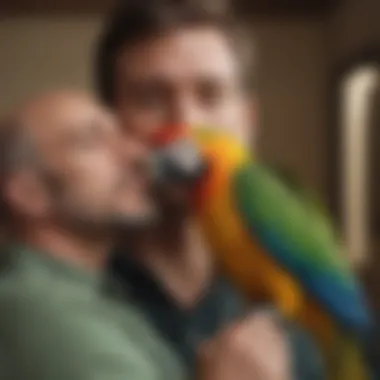
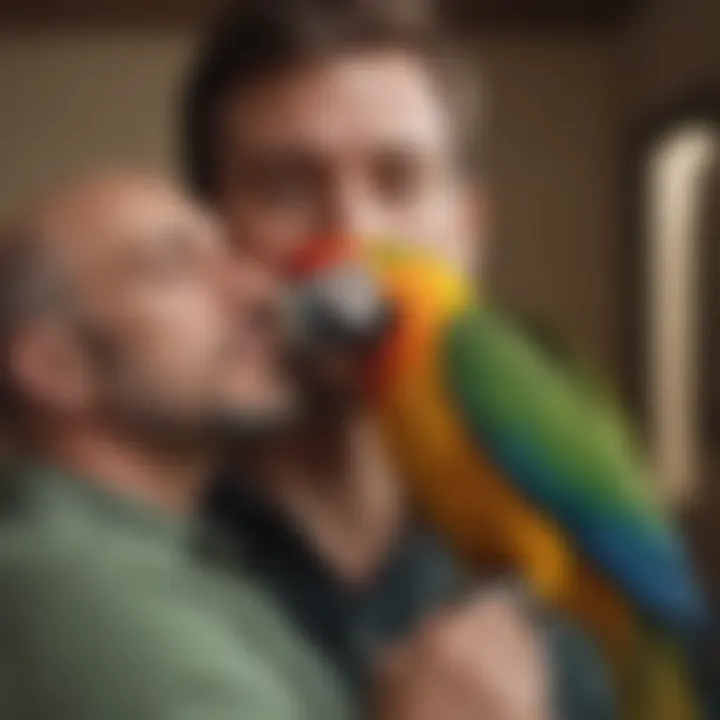
Intro
Pet birds, revered for their vibrant personalities and cheerful songs, can become a source of unintentional worry for their owners when they fly away. Understanding the reasons behind their urge to escape is crucial for preventing such distressing situations. Factors such as environmental conditions, behavioral tendencies, and emotional needs all play a role in birds seeking freedom outside their homes.
This article aims to explore various aspects of pet bird ownership, offering methods to maintain a secure and enriching environment for these creatures. Through careful consideration of their daily care routines, camaraderie requirements, and comprehensive health and wellness strategies, bird owners can successfully reduce the risks of escape, leading to a more harmonious existence.
Care Tips
Taking proper care of pet birds involves more than providing food and shelter. A holistic approach includes understanding their everyday needs to minimize the flight risk. This section outlines key routines and practices that should be integrated into the daily life of pet birds:
Daily Care Routines
Establishing a consistent daily routine fosters a sense of security for birds. Regular schedules can include feeding at set times and routine cleaning of living spaces. Birds often thrive on predictability, which greatly lowers stress levels.
Cage Setup and Maintenance
The bird’s habitat should feel safe and stimulating. A cage that is too small can lead to frustration, prompting escape attempts. Owners must consider avian needs in cage design. For instance:
- Large cages promote better physical health and exercise.
- Install perches of various sizes and materials for comfort.
- Ensure safety from sharp edges to avoid injuries.
Frequent cage maintenance, including checking for wear on toys and perches, helps maintain this safe haven.
Hygiene and Cleaning Practices
Maintaining cleanliness not only promotes health but also limits escape motivations. Regular cleaning routines should include:
- Disinfecting surfaces, feeding dishes, and water containers.
- Removing droppings from cages promptly to reduce bacteria growth.
- Checking for mold on food or older toys encourages care.
Establishing a clean habitat will inherently lead to happier birds, less prone to seeking hazardous outings.
Seasonal Care Adjustments
Changes in seasons can stress pet birds, forcing them to seek outside shelter. Birds might try to explore their surroundings if they don’t feel safe indoors. In cooler months, ensure indoor areas remain warm while providing ample ventilation during more humid months.
Behavioral Insights
Understanding a bird’s behavior is critical when preventing escapes. This entails recognizing body language and addressing common issues through appropriate techniques.
Understanding Bird Body Language
Birds communicate through visual signals. Subtle differences often indicate their feelings. For instance:
- Puffing feathers signal contentment, whereas fluffed feathers might indicate fear.
- Rapid tail movements can show excitement.
Being attentive in observing these traits creates a stronger bond and prevents sudden reactions that might lead to panic and eventual escape.
Common Behavioral Issues and Solutions
Addressing behavioral hurdles efficiently is essential. Here are a few issues and remedies:
- Aggression towards other pets can lead to disruptive escapes; gradual interactions are important in such cases.
- Boredom leads to mischievous behavior; providing obstacles can keep birds engaged.
Positive Reinforcement Techniques
Positive reinforcement builds trust between the bird and its owner. Teaching commands or tricks helps in controlling their desire to leave environments perceived as restrictive.
- Use treats or praises to encourage desirable actions like returning to their perch when called.
- Avoid loud reprimands. They influence stress rather than learning.
Social Interaction Needs
Birds, being social animals, thrive on interactions. Prolonged periods without company can encourage attempts to flee. Social bonding through interaction even duplicating flight-related actions can serves their engagement well.
Nutrition Guides
A well-balanced diet influences behavioral health in pet birds. Understanding the components can play a role in escape prevention too.
Essential Diet Components
Varieties in diet methods keep birds happy and healthy. Owners must prioritize these components:
- Fresh fruits and vegetables should account for nearly 30% of meals.
- High-quality seeds provide other essential nutrients.
Safe and Toxic Foods
Care must be keyed to the type of food fed. Certain treats like avocado can be toxic and dangerous. Researching available literature is an excellent first step in safeguarding their diet and health.

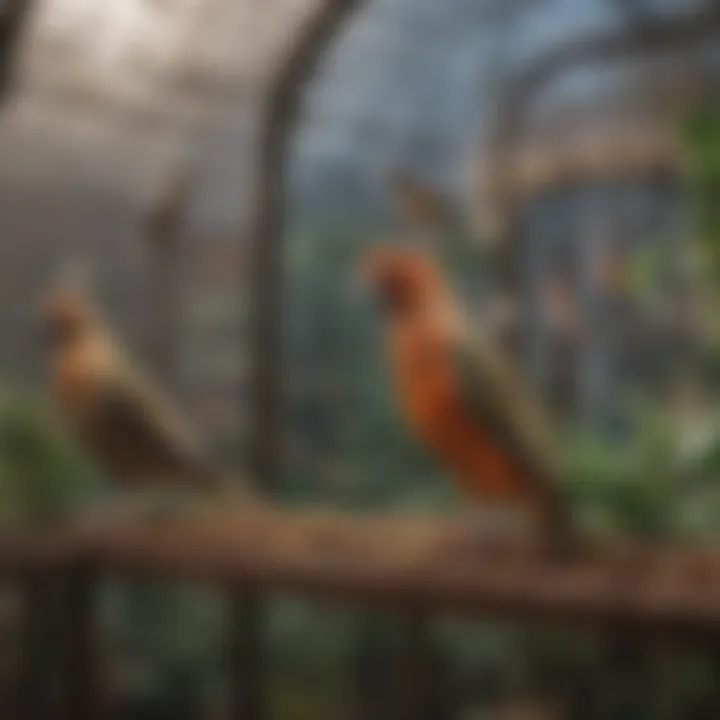
Supplements and Treats
Occasional bird-safe treats or supplements round out nutrition nicely. Alternatives like flaxseed and cuttlebone enhance their well-being.
Feeding Strategies for Different Species
Different species demand adjustments in diet. Cockatiels may require high-fat seeds while parakeets favor seed-packing and pellets in processing functional nutrition.
Wellness and Health
Health checks secure peace of mind for both owners and birds alike. Care strategies directly affect escape tourism through keeping birds well.
Routine Health Checkups
Periodic veterinary exams aid early illness detection and management. Routine checks can prevent future ailments that might prompt anxiety-driven escape behavior.
Identifying Symptoms of Illness
Familiarize with signs indicating illness such as changes in droppings or visible disfiguration. Any sudden behavioral change may require expert consultation.
Preventative Care and Vaccinations
Vaccinations protect birds from dangerous communicable diseases. Close coordination with veterinarians allows every precaution to boost health.
Mental and Emotional Well-being
Mental stimulation can aid emotional well-being and foster resilience. Engaging birds through puzzle toys or interactive discussions aids both health improvement and activity strategies.
Enriching Activities
To deter thoughts of escape, offering engaging activities for pet birds is essential. Numerous opportunities exist for development.
Toys and Playtime Ideas
Providing toys creatively ranks among enriching essentials. Each toy offers options for complex exploration leading to less anxious settings influencing escape manana.
Training and Tricks
Training sessions using details of interests helps strengthen bonds and retention. With positive reinforcement focused ideas into practice, frustration often shifts easily away from obnoxious escape tendencies.
Outdoor Activities and Interaction
Safely allowing spouse flight during appropriate times can diminish urges rather quieter containers represent outside whimsicality easing explorative flowing minds. Utilizing harnesses proves ideal at times.
DIY Projects for Mental Stimulation
Create or purchase intricately centered toys and enrichment centers designed explicitly for higher difficulties capable under well spurred innovations. Incorporating natural materials heightens durability and engagement.
Creating an enriching and stable environment fosters a sense of security, thus significantly reducing the inclination for birds to escape.
Fostering a careful examination of each crucial element minimizes general concerns while crafting an encompassing survival mechanism for your delightful companions. Through these diligent strategies, pet owners may not only grasp potential escape routes but also lay groundwork ensuring perpetual ownership joined into warnings connected to preventational emerging champion of splendid parallels.
Preamble to Pet Birds and Escape Behavior
Understanding the intersection between pet birds and escape behavior is crucial for anyone considering or currently caring for a feathered friend. This phenomenon can impact both the well-being of the bird and the emotional state of the owner. Thus, it’s essential to decode the various underlying factors that may lead a bird to fly away, which can result in distressing situations.
Escape behavior in birds stems from a mix of instinct, environment, and maintained behavior patterns. When the underlying reasons behind these tendencies are comprehended, taking measures to foster a secure living environment becomes attainable. This approach benefits the birds by ensuring they feel safe and less inclined to explore their surroundings in a manner that may endanger their lives or health.
There continues to be a growing desire among pet owners to keep their birds healthy and safe. Thus, examining the related aspects can lead to a deeper connection with their pets. With specific focus on factors that contribute to escape behavior, such initiatives can dramatically mitigate incidents when birds may attempt to gain their freedom. By adapting the living space and interpreting the behaviors of these creatures, serious consequences can be avoided and harmonious relationships preserved.
Defining the Appeal of Pet Birds
Pet birds have become increasingly popular due to their stunning colors, playful behavior, and the companionship they offer. Ranging from the cheerful budgerigar to the intelligent African grey, birds possess unique characteristics that attract various types of bird lovers. Each species comes with its charm and can provide companionship that feels vibrant.
Birds also engage their owners with vocal sounds and social interactions. Their ability to mirror human conversations adds an element of surprise that owners appreciate. The dynamic between humans and birds is something many nurture deeply, making comaraderie with these pets worth the engagement.
The presence of birds often encourages celebrations of life. Birds are symbolic creatures promoting happiness and flow of energy. However, it is necessary to recognize the differences in various species as well. Some birds require more time and patience, while others might suit assorted lifestyles better without frequent escape risks from their desired spaces.
Recognizing Flying as a Natural Instinct
Flying is integral to a bird’s nature; it offers a sense of freedom not attainable within confined spaces. Birds have evolved to rely on flight not just for escape but also for exploration and connection with their environment. Their wings produce an exhilarating experience, key to social interactions and environmental navigation.
This background leads to an ultimate understanding for pet owners. Many birds experience restraint indoors—a factor that could trigger flight responses compounded by other stressors. When an opportunity arises, instinct not already dampened by domestication drives a bird to fly away. Hence, pet owners need to comprehend how these natural instincts play paramount role in the potential escape of their birds.
Being informed regarding the innate tendencies of feathered pets can significantly help to retain their security. Developing awareness around emotional triggers translates to successful management of pet birds in a home. Taking heed of various influencing aspects enables owners to craft more satisfying enrichments that tame such urge to flee.
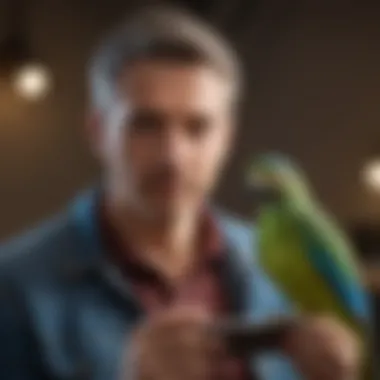
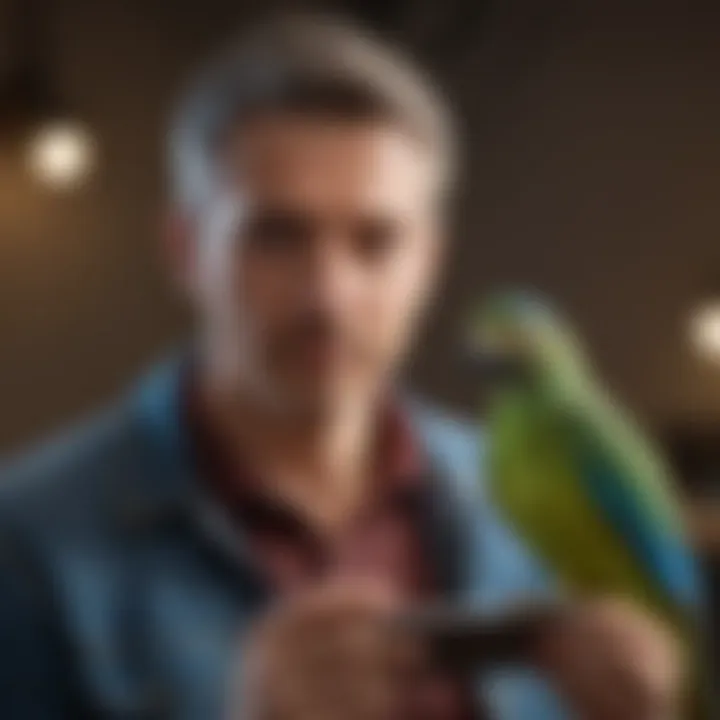
Common Reasons for Birds Flying Away
Understanding why pet birds fly away is crucial for all bird owners and aspiring parents. This knowledge helps in creating strategies to prevent such incidents, fostering a safer environment for both pet and owner. Consideration of these reasons can lead to better bonding with your bird and enhance its general well-being. Knowing the motivations behind escape attempts allows owners to address specific issues within the living environment and their interactions with the bird.
Environmental Triggers
Environmental factors play a significant role in a bird's decision to escape. Birds have keen senses and can easily detect stimuli in their surroundings. This might include window access that allows them to see the outdoors, bright lights that mimic natural conditions, or even sudden movements that trigger their flight instinct. Any change in the environment, like rearranging furniture or bringing in unfamiliar objects, can also instigate a sense of danger. Often, the thrill of open space or new sights leads to impulsive flight, which is why securing potential exit points is essential.
Common environmental triggers can include:
- Unsecured windows and doors
- Sudden loud noises, like fireworks or construction
- Presence of other pets or wild animals outside
By identifying these triggers, owners can make simple alterations that can have profound impacts on a bird's safety.
Stress and Anxiety Factors
Stress is another critical reason birds take flight. Various stressors may provoke such behavior, including changes in daily routines, loud house guests, or even other pets. Birds can be particularly sensitive to human emotions; if a household is tense or loud, birds may feel threatened.
Key sources of stress include:
- Frequent disruptions in their environment
- Lack of personal space when being handled excessively
- Introduction of new people or animals into the household
Recognizing signs of stress in pet birds is equally vital. These may involve birds becoming more reclusive, losing their vocalization, or displaying aggressive tendencies. Addressing these stressors can lead to more content birds, thereby fostering greater behavioral stability.
Curiosity and Exploration Drive
Birds are naturally inquisitive creatures. Curiosity drives their need to explore, sometimes leading to escapes. If they sense new sights or sounds, their exploratory instincts kick in. The desire for freedom to fly and discover is fundamentally embedded in their nature. Also, they might be seeking food or the companionship of other birds outside their living space.
Factors fueling curiosity include:
- Changes in weather or season that can alter their environment
- Vibrant movements or sounds that give a call for exploration
- New introductions, be it toys or other animals
To channel this sense of adventure safely, bird owners ought to provide plenty of interactive toys and activities within the permitted space. It’s essential to capture their curiosity in a manner that does not give them the urge to fly away.
Keeping an engaging environment can constrain the natural flights while properly stimulating your bird.
Understanding the Bird's Perspective
Understanding the perspective of pet birds is essential. Birds possess unique instincts and behaviors shaped by their backgrounds. This insight helps owners create positive living conditions and prevent them from attempting to escape. Knowledge of these behaviors enhances the bond between birds and their owners. It also aids in making informed choices about precautions that might seem necessary at first glance.
Instinctual Behavior in Different Species
Different bird species exhibit a variety of instinctual behaviors that can drive their need to fly away. For example, parakeets have a strong inclination for social interaction and exploration. Larger parrot species may display a greater tendency toward territory marking and seeking freedom. Recognizing these instincts can illuminate their motivations when they decide to stray into open air.
Birds like finches often survive in flocks. In these species, escaping might reflect the innate drive to join others. Alternatively, solitary species such as cockatiels may depart seeking solitude from unwanted stressors. This instinct is fundamental in understanding corresponding behavior patterns within different bird species. Some key instinctual traits include:
- Foraging behaviors: Many species are driven to seek food, prompting them to leave secure surroundings.
- Flocking instinct: Birds often feel safer and behave differently when in groups, sparking escape tendencies if they perceive disparate situations.
- Curiosity: Some birds look to explore new environments or objects, lifting barriers protecting their living areas.
By comprehending these behaviors, owners are in a better position to create secure habits, physical enclosures, and awareness of potential exit factors that lead to risk, both physically and behaviorally.
Impact of Social Interaction on Escape Behavior
Social interaction greatly influences a bird’s behavior regarding escape attempts. Birds are innately social creatures, manifesting a strong need for companionship and interaction. If they feel lonely or ignored, they may seek alternative forms of belonging outside their confined space. Moreover, social interactions can shape their perceived safety levels in their home environment.
Birds who interact positively are less likely to experience the anxiety that often precedes escape attempts. Those lacking sufficient interaction may be more likely to test their boundaries by attempting to leave. For instance, an African Grey parrot exhibiting bonding behaviors might request attention — if dismissed, it may explore means to get attention that involve flying away.
Key factors influencing social interaction:
- Routine engagement: Regular interaction with owners and other birds keeps their spirits high, discouraging escape behavior.
- Sharing space: Birds are less inclined to fly off when they notice their companions similarly occupying space, breeding comfort between them.
- Quality of interaction: Positive interactions significantly contribute to their feelings of security; hence establishing trust fosters a sense of safety.
Preventive Measures to Keep Birds Safe
The significance of preventive measures in maintaining the safety of pet birds cannot be overstated. Many birds have a natural predisposition to fly away due to their instincts. Understanding this proclivity allows bird owners to take proactive steps to mitigate the risks associated with escapes. An intelligent approach to preventing a bird from flying away focuses on creating a safe environment and stimulating the bird's instincts in constructive ways. Each effort made in this direction enhances both the bird's well-being and the owner's peace of mind.
Creating a Secure Living Environment
Establishing a secure living environment is fundamental to keeping pet birds safe. This includes several aspects, such as selecting the right birdcage and ensuring the living space is devoid of escape routes. Invest in sturdy, properly sized cages with secure locks. Birds can often maneuver and manipulate their surroundings, so ordinary latches may not suffice.
Just as important is bird-proofing the home by identifying hazardous spots—such as windows and doors. Installing screens, or keeping windows closed when windows or balcony doors are open, can lower escape chances. Remove any indoor plants or access to items that may provide hiding spaces. Consider the overall room setup by seeking ways to minimize risks while enhancing the bird's comfort. Familiarity with the layout can also decrease stress, as birds are creatures of habit.
Training and Encouraging Indoor Flight
Training that safely encourages indoor flight can promote healthy behaviors in pet birds. Scheduled flying time permits birds to exercise, develops their muscle tone, and mitigates restless energy—factors that can lead to anxious or erratic behavior, which sometimes prompt escapes. Using a consistent flying routine signals to your bird that it’s safe to fly indoors, thus making outside escapes a less attractive option.
Positive reinforcement plays a pivotal role during training. Provide treats or verbal affirmations when the bird displays desirable behaviors, like returning to its cage after a flight. Furthermore, incorporate flight recall methods to facilitate a healthy attachment. Ensure that the area is clear of hazards during flight time, removing items that may cause birds to panic or stray away.
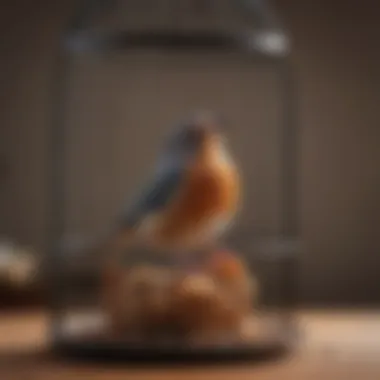
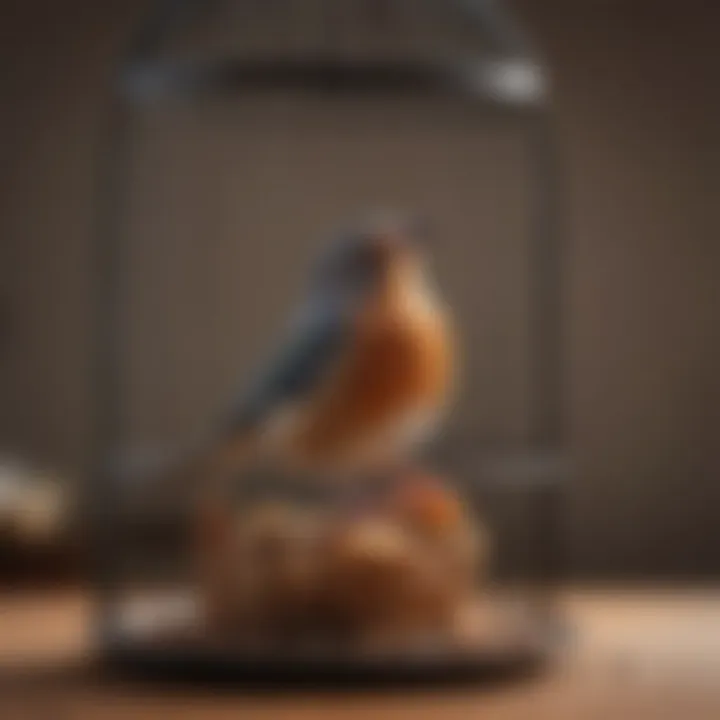
The Role of Mental Stimulation
Mental stimulation serves a critical function in birds' overall happiness and safety. Boredom or lack of interactive play can lead to flights of fancy as birds seek entertainment beyond their enclosed spaces. Enriching their environment with toys, climbing structures, and challenging activities is important. Utilize puzzles and foraging toys to provide cognitive challenges and prevent destructive behaviors grounded in discontent.
Social interaction also contributes to mental stimulation. Birds thrive on contact; thus, regular interaction—be it talking, singing, or even computer-generated calls—provides companionship. Ensure routine and variety in stimulation to foster a mentally enriched atmosphere.
What to Do If Your Bird Flies Away
If a pet bird escapes, the situation can quickly become frightening and overwhelming for pet owners. Understanding how to respond in such critical moments can directly influence the eventual recovery of the bird. Effectively managing these circumstances involves taking immediate action, engaging community support, and utilizing available resources.
Knowing appropriate measures to take can enhance the chances of bringing home a lost bird safely. Below, detailed strategies present not just actions to perform after a bird flies away but also how these actions contribute to effective recovery efforts.
Immediate Actions to Take
When your bird flies away, a rapid response is essential. Begin by remaining calm and focused. Expected emotions may range from panic to worry, yet keeping a clear head is invaluable.
- Searching Your Surroundings: Start looking around your home and immediate vicinity. Birds may fly nearby, resting on familiar objects or buildings. Keep an eye on trees, wires, or fences where the bird can perch. Once you search your home, expand your search radius outside. Maintain a soft and gentle voice while calling the bird’s name to entice it to come back.
- Photographs and Descriptions: Create and share flyers with clear images. Include distinctive markings and colors. Mention where the bird was last seen. Consider proper local places to distribute these flyers.
- Notify Neighbors: Let nearby residents know your bird is missing. Inform them on what to look out for. Having extra eyes can significantly aid the search process.
These immediate actions ensure you embrace a proactive approach rather than waiting passively with uncertainty.
Utilizing Local Resources for Recovery
After taking initial steps, it’s prudent to tap into local resources.
- Local Avian Rescue Organizations: Many cities have rescue organizations dedicated to birds, often equipped with the expertise necessary for rescue efforts. Reaching out can be beneficial, as they may have tips specific to the local wildlife or may even undertake rescue actions on your behalf.
- Social Media Platforms: Use platforms such as Facebook or Reddit to reach community groups dedicated to lost pets. Especially targeted groups mixed with a local aspect can fervently assist in spreading the word, increasing visibility.
- Local Veterinary Services: Community veterinary offices often maintain records of lost pets and can offer advice or even support concerning nearby sightings. Inform them about the missing bird and provide contact details in case they receive inquiries.
Utilizing local resources not only widens the search network but also establishes an additional line of communication during a stressful time.
Building Community Awareness
Making the local community aware of your lost bird is essential. Engaging all available avenues can lead to quick bird recovery.
- Organizing Search Parties: Consider organizing search groups with friends or family. Working together increases coverage and hope in the recovery. Reinforcing community unity also helps relieve personal pressures. Collaboration may result innovatively with different ideas and specific locations.
- Local Events: Attend community gatherings while communicating the need for help in finding your lost bird. Leveraging local channels such as bulletin boards, social media posts, and school platforms may deepen engagement.
- Educative Messaging: Share informative posts detailing reasons why a bird may fly away. Raising awareness not only serves the immediate need but informs the broader audience about responsibility in bird ownership, which can resonate with fellow pet owners.
By actively drumming up community awareness, owners thrive to enhance cooperation, leading to a higher probability of a successful recovery.
Long-Term Strategies for Successful Bird Ownership
Long-term strategies for bird ownership are vital for creating a sustainable and harmonious relationship between humans and pet birds. These strategies turn ownership into a mutual bond that benefits both parties. Responsible bird owners carry out these practices to lessen the chances of difficulties such as escapes or health issues. This section explores several key elements which contribute significantly to long-term success with pet birds.
Ongoing Training and Bonding Activities
Training is more than just a method for command responses; it's a valuable tool for enriching the bird's life and reinforcing the owner-bird bond. Birds are intelligent creatures that thrive on interaction and require social engagement for their mental well-being. Engaging in training sessions can stimulate their minds and reduce anxiety, which may lead to unwanted escape behaviors.
Regular bonding activities strongly complement training. These can include gentle handling, vocalizations, or using toys that encourage interaction. Frequently engaging with the bird positively affects its feelings of security and fosters trust. Hence, this makes escapes among well-bonded birds less likely. Simple yet consistent exercises lead to benefits that go beyond training commands—they stabilize the natural instincts of birds, reducing anxiety and maintaining mental agility.
Regular Health Check-ups and Environment Assessments
Health is parallel to happiness in avian care. Regular veterinary check-ups help catch any medical conditions or abnormalities early, allowing for timely intervention. Newly adopted birds should undergo a thorough examination to ensure their health and lessen escape motives that arise from discomfort. Owners must make it a routine to take their birds to an avian veterinarian every six months or at least once a year. Attention to the bird’s physical conditions ensures issues do not escalate, keeping the pet secure and happy.
Alongside health care, consistently assessing the living environment is crucial. Regular evaluations of the bird's habitat for potential hazards like sharp wires or uncovered windows prevent escapable situations. The environment should feel safe, which includes removing any potential escape routes or sources of stress. Providing enrichment items that keep the bird entertained and challenged reduces the drive to explore the outside world, reinforcing home as a secure refuge.
Staying Informed on Avian Care
Lastly, continuous education goes hand in hand with responsible bird ownership. Staying up-to-date with avian care techniques is crucial for fostering a healthy homelife. Knowledge of dietary needs, behavioral patterns, and healthcare advancements keeps owners adapted to evolving best practices.
Effective resources include reputable websites, journals, and forums like [Reddit] or literature outlining care methods and nutritional guides. Active participation in bird communities meets not only a need for information but also offers emotional support. This culture of learning ensures that bird owners responsibly manage and adapt to changes, minimizing risks related to escapes and ensuring a comprehensive perspective on ownership.
Remember, proactive care and education are critical for successfully preventing escapes and fostering a healthy, happy environment for pet birds.
End
The topic of pet birds flying away is not merely a matter of concern for owners; it is an essential aspect that directly impacts the relationship between humans and their avian companions. Understanding the causes of this behavior is critical in taking informed measures to prevent future escapes. The knowledge shared through this article offers several benefits, particularly in raising awareness about the instinctual needs of birds, such as their desire for exploration and social interaction.
Key considerations include a secure living environment and recognizing specific triggers that encourage flight. By summarizing core ideas, readers gain a better grasp of their pets' behaviors, which may lead to better choices in care practices.
"Informed bird owners create a lastig bond with their pets, increasing safety and happiness forboth."
This conclusion serves as a reminder that prevention strategies are not solely about avoiding escapes; they form a comprehensive approach to overall avian care. A well-cared-for pet bird can feel secure and fulfilled while reducing anxiety for the owner. Understanding the nuances of these relationships enables pet birds to thrive within their chosen family settings and minimizes the risk of flight through knowledge and proactive measures.
Recap of Key Points
- Pet birds often fly away due to instinctual behavior, environmental triggers, or stress.
- Creating a secure environment and fostering bondino via training is essential for reducing escape behaviors.
- Immediate actions and using local resources are crucial if a bird does fly away.
- Regular health check-ups and ongoing education about avian care are needed for successful ownership.
Empowering Bird Owners for Better Care
Empowering bird owners involves equipping them with knowledge and practical skills. By understanding each pet's unique needs, owners can tailor their approach to, for instance, providing mental stimulation and enriching activities to keep their birds engaged.
Adopting this knowledge allows pet owners to mitigate potential escape risks through proper training and secure environments. Furthermore, continuous learning about avian needs through resources, such as reputable veterinary sites or avian communities on platforms like Reddit and Facebook, fortifies the owner's capacity to provide better care. Promoting awareness among local bird owners and enthusiasts can create a support network, enhancing the sense of community among people who care for birds.
Establishing a foundation based on information enables bird owners to foster long-lasting relationships with their pets, ultimately creating a harmonious home for both parties. Owners must remember that their commitment to understanding and nurturing their bird directly corresponds to the pet's well-being.















